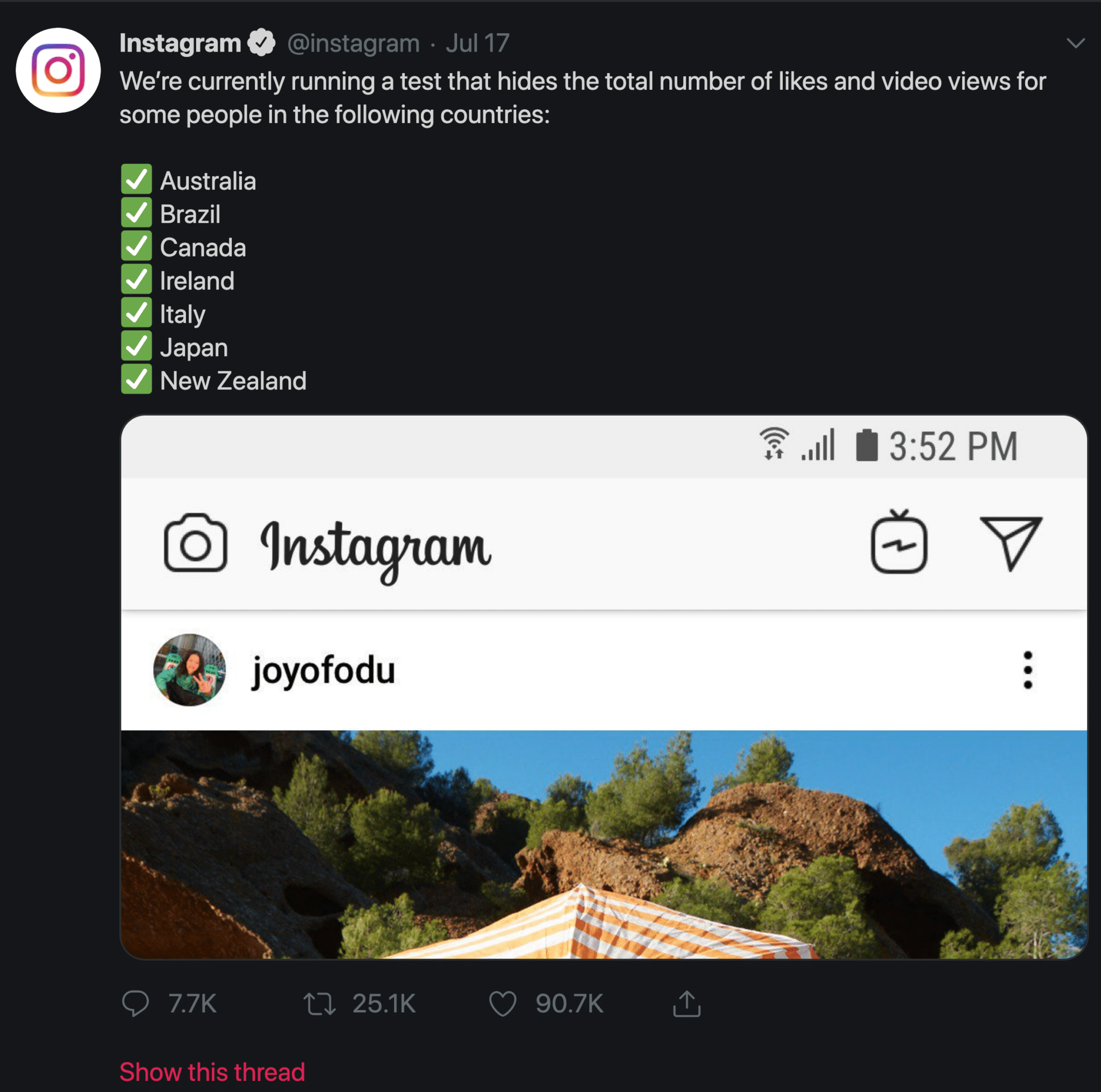r

The Instagram update that marketers need to know.
Instagram removes likes as part of a test to combat self-esteem.
Instagram is officially testing the removal of ‘likes’ on posts. They shared this information on their Twitter page just a few days ago – has it been a long-time coming? There has been plenty of chat around what the platform would be like without the ability to ‘like’ a post. But what is the general opinion? Let’s have a look.
Where?
The test is being rolled out across only seven regions:
Italy
New-Zealand
Ireland
Japan
Canada
Brazil
Australia

It’s early days, so whether or not this test will reach the UK remains to be seen.
The update itself doesn’t actually remove the ability to like a post, it merely hides the number from your followers. The account holder can still view the number, and anyone who really wants to can scroll through and count the likes. Although that would be a little weird.

Credit: Instagram.
Opinion?
I had a scroll through the Twitter replies to this announcement, interestingly, most of what I saw wasn’t a reaction to the update itself but a demand for Instagram feeds to return to the chronological order from which it started:

This is a whole different discussion, but interesting to note.
The Reasons.
Aaanyway, why has Instagram tried to test this update? It is largely off the back of the decision to tackle online bullying. Instagram released a statement on the initiative on their press page which you can find here.
It is definitely a step in the right direction to battle mental health issues around social media – if Instagram had removed the ability to like a post altogether it could have been too hasty. Hiding the number itself allows business accounts to continue monitoring their insights while general users can essentially control how they see post engagement. It will be interesting to see how users respond to this test in due course.















